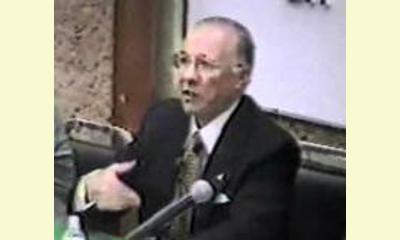|
|
The University and the Peace Process in Colombia
un article par Robin
Video: ¿Es posible la paz en Colombia?
The Peace Dialogues between the government of
Colombia and the FARC revolutionary forces include
other players as well. Representatives of the
civil society of Colombia have also gone to Havana
to plead for peace. According to Hernando Roa
Suárez, Advisor to the Rector of the National
Pedagogical University, writing in the online news
service El Espectador, the sectors of the
civil society as a whole have opened channels of
reflection and action about peace, not only as an
expectation or illusion, but as a framework for
understanding everyday concrete development of
democracy.

Hernando Roa Suárez on YouTube
click on photo to enlarge
Suárez mentions contributions to the peace process
by many civil society organizations, including El CINEP, Arcoiris,
IEPRI, ESAP, Viva la
Ciudadanía, Redepaz, MOE, Plural, and other groups working in the various
regions of Colombia. He also mentions the role of
the United Nations and the National University in
helping to organize their involvement in the peace
talks.
In his article, Suárez recognizes that academia
has already made contributions to peace, but he
says that the time has come to deepen this into a
new vocation of service, the rethink and develop
the peace process. He makes 14 proposals to the
universities, which are included here in an
addition to this article.
He concludes that "as academics, we must not
remain spectators . . . University communities
are called upon to intervene creatively in the
peace process and not to forget that "to do is not
to agitate but to accomplish the difficult." It
behooves us to intervene in the most arduous task,
where the stakes are the democratic destiny of our
great nation. The culture of war must be
confronted with a well-informed and well-planned
negotiated political solution. It is clear for
informed Colombians that it is indispensible to
reformulate the politics and alternatives for
peace in Colombia. As of now, in 2013, democratic
Colombians are invited to continue to build a new
culture of peace with dedication and political
realism."
(This article is continued in the discussionboard)
|








|
DISCUSSION
Question(s) liée(s) à cet article:
What is happening in Colombia, Is peace possible?
* * * * *
Commentaire le plus récent:
The force of non-violence constrains the force of arms!
Colombia - the force of peaceful resistance -
At the beginning of July, the rebels of the armed revolutionary forces of Colombia (FARC) kidnapped a 51 year old Swiss, and his Colombian assistant who worked in the Indian communities of Cauca province where they were setting up development projects by building schools and community production enterprises.
The news of the kidnapping was spread through all the villages and 2000 Indians set out to pursue the 400 guerillas. They reached them at an elevation of over 4000 meters (12,000 feet), encircled them, and without any weapon, constrained them to release the 2 hostages! (After 2 days, the hostages were released).
This release, obtained through "peaceful resistance" has raised a national debate: the possibility of resisting violence without needing to use weapons has demonstrated the effectiveness of human solidarity movements.
"I will return, and I will then be millions" prophesied the Aymara Indian leader Tapak Katari, in 1781, at the time of his execution by the Spanish conquistadors.
100 million in 1492, the Indians were no more than 4,5 million one century and half later. Currently there are 44 million Indians populating Latin America.
In spite of their great diversity, the Indian movements take on more and more importance. In Ecuador, Guatemala, Bolivia, Peru, Mexico or Colombie they are opposed to the neoliberal system that governs the Americas, while protesting against the imposition of the American economic market. . ... continuation.

|
|









